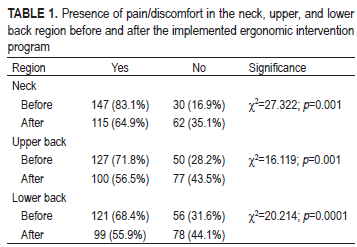The effect of the ergonomic intervention program on work-related musculoskeletal disorders in healthcare professionals
DOI:
https://doi.org/10.17532/jhs.2023.2624Keywords:
Ergonomic intervention program, Work-related musculoskeletal disorders, healthcare professionalsAbstract
Introduction: Work-related musculoskeletal disorders (WRMSDs) are the most common work-related disorders and describe a wide range of degenerative and inflammatory states that affect blood vessels, peripheral nerves, bones, joints, ligaments, tendons, and muscles. Healthcare as a special sector has almost the highest prevalence of WRMSDs in the world, far ahead of construction, mining, and manufacturing. Studies conducted in the EU and the USA indicate that health-care professionals most often have a problem with the lower back between 50% and 57% of cases, resulting in an average loss of more than 7 working days during 1 year.
Methods: This study included 177 health professionals of both genders who are actively involved in the provision of health-care services. The study was conducted in the Public Health Center of Sarajevo Canton, which provides primary and specialist consultative healthcare services. The study was designed as a prospective, longitudinal, interventional, and descriptive-analytical that included all respondents who met the inclusion criteria. The instruments used in the study are the standardized Dutch Musculoskeletal Discomfort Questionnaire, modified according to our study, the standardized work ability index, and the ergonomic intervention program (EIP).
Results: The highest frequency of work-related MKDs in health-care professionals before and after implementation of the EIP was in the neck area (83.1% before, 64.9% after), in the upper back region (71.8% before, 56.5 % after) and in the lower back region (68.4% before, 55.9% after). The average score of the working ability index before the introduction of the EIP was 35.44 ± 8.59, while after the implementation of the EIP it increased statistically significantly and amounted to 38.40 ± 7.30.
Conclusion: The EIP influenced the reduction of the MKDs frequency caused by work, and increased the working capacity of health-care professionals.
Downloads

Downloads
Published
Issue
Section
Categories
License
Copyright (c) 2024 Dženan Pleho, Amra Mačak Hadžiomerović, Arzija Pašalić, Bakir Katana, Amila Jaganjac

This work is licensed under a Creative Commons Attribution 4.0 International License.










